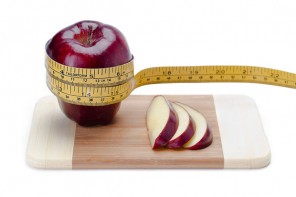Approximately half of your household waste is organic and can be turned into compost
Why make compost?
Using compost in your garden will bind the soil and help it to hold water and air. As a result, your plants will grow better. Turning your organic waste into compost also takes some of the pressure off Cape Town’s landfill sites, which are filling up fast.
What to use:
Most organic materials that will rot or decay easily will make good compost. You can use:
- Garden waste such as grass cuttings, leaves, and dead flowers
- Vegetable and fruit peelings, cooked table scraps, tea leaves and tea bags, egg shells and stale bread
- Paper, cardboard, sawdust and wood shavings, animal manure, wood fire ash and seaweed
What not to use:
- Don’t use anything that doesn’t rot, such as metals, glass and plastics
- Don’t use garden waste sprayed with pesticides, toilet or septic tank waste or diseased animal carcasses or plants
- Don’t add meat scraps to the compost as this will attract rats and mice
- Don’t add potato peels or the peels of citrus fruits such as oranges – they will make the soil too acid
- Leave out cooked food, which will attract unwanted flies and rodents
- Don’t add too many grass cuttings to the bin – this will heat it up too much. Also leave out tough weeds
Making your compost heap:
There are many ways to make a compost heap. You can use an old tyre with a board covering the top, build a box from sticks or poles and cover it at the top, or buy a specially made bin at
a garden shop.
- Start by putting down about 200 mm of mixed organic material
- Mix this well and chop up any big pieces. Don’t add layers of only one material, such as grass cuttings or leaves
- Make sure that air can circulate freely throughout the mixture
- Make sure the compost heap is damp, but not wet
- If you want to speed up the process, add a ‘starter,’ like a bucketful of mature compost, animal manure, or bone meal
- You can get ´starters´ at nurseries and garden shops
- You can also add soil to help the organic material to rot
- Carry on adding layers of about 200 mm. The last layer should be soil, dry grass, leaves, or sawdust, as this will keep smells and flies away.
Looking after your compost heap:
- After one week, push your hand into the compost. It should feel hot.
- After a few weeks the heap will have cooled down. This means that you need to turn it so
- that it will heat up again. The heat kills weed seeds and fly larvae
- You can also control flies by covering any new material you add with dry soil, sawdust, grass or leaves. Turning the compost heap makes the organic material break down faster
- Keep the heap moist, but not wet, or it will smell bad. If it does get too wet, add absorbent material like sawdust, straw or manure and turn the heap
- If you find large white worms in the compost, destroy them. They are the larvae of the large black and yellow fruit beetle, which can do a lot of damage in the garden
Harvesting your compost:
The compost will be ready in about three months. A week before you harvest it, add some vegetable matter to bring the worms up to the top of the bin. Put the top part of the compost
to one side. Use the rest of it in your garden.
Restart the cycle by placing some compost on the shade cloth, and then adding the top half – containing the worms – that you took out first.
Use worm bins to compost your kitchen waste
You can also use earthworms to help you to make excellent, rich compost! The easiest way is to purchase worms and worm bins, making up “worm bin kits”.
Purchasing “worm bin kits”
In Cape Town, try Fullcycle, they supply worm bin kits and will give you advice on how to look after the worms.
Making a worm bin
Alternatively, you can make your own worm bin at home.
Finding earthworms
There may already be earthworms in the soil in your garden. Otherwise, you can find them in damp soil near rivers, or you can ask your local nursery to help you find some.
- Use a plastic bin with a lid, or any other container. If the container has no lid, cover it with hessian. Try not to put the bin in direct sunlight – worms like cool, dark places. Drill a few holes in the bottom and sides of the bin. This allows the air to circulate and excess water to drain out. Place the bin on bricks to improve drainage.
- Put a layer of sand or gravel in the bin. It should come up to a few centimetres above the drainage holes
- Put a board or piece of cardboard on top of the sand or gravel
- Make sure there are small spaces on the sides of the board for drainage
- Put a layer of shade cloth on top of the board, so the worms can’t escape
- Put a layer of mature compost mixed with shredded newspaper in the bin
- Put 50 – 100 worms in the bin, and feed them chopped up kitchen waste like vegetable peels, teabags and old coffee grounds every day. Add a layer of shredded newspaper every time you put waste in the bin, to keep fruit flies away
- Use a fork to turn the top layer of the bin once a week. This introduces air into the bin. At the same time, add some eggshells to neutralise acid
Source: www.capetown.gov.za
The liveeco team









